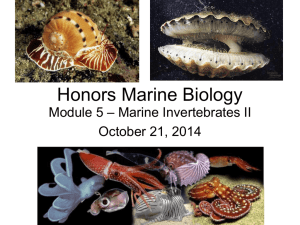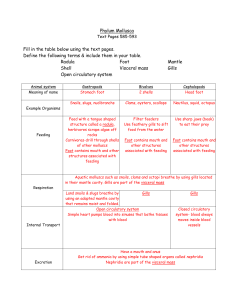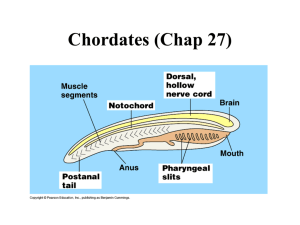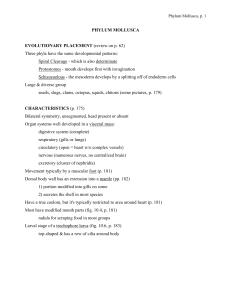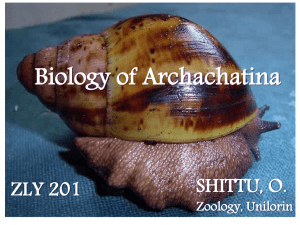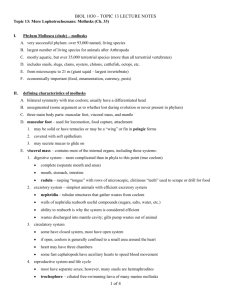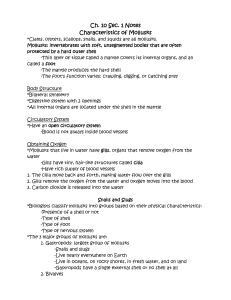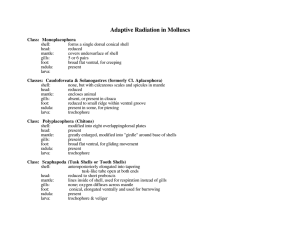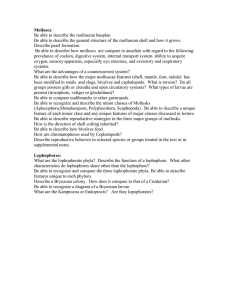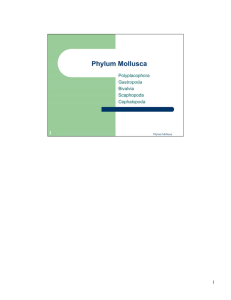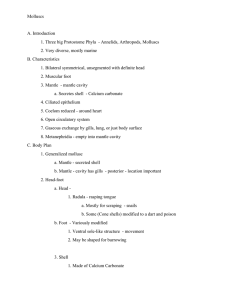Biology of Aspatharia sinuata Diagram Slides only
advertisement
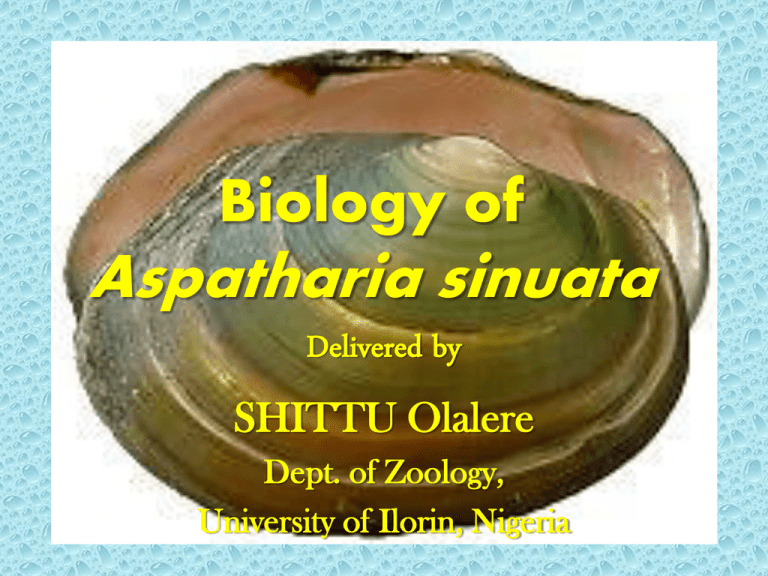
Biology of Aspatharia sinuata Delivered by SHITTU Olalere Dept. of Zoology, University of Ilorin, Nigeria External Shell Characteristics Internal Shell Characteristics Internal Shell Characteristics Internal Shell Characteristics The Mantle Cavity The posterior edges of the mantle folds are modified to form dorsal excurrent and ventral incurrent openings. Gills The mantle and gills of bivalves are involved in gaseous exchange. The gills are modified for filter feeding, they originated from the primitive ctenidia by elongation of the filaments on both sides of the central axis. The end of the filaments folds backward to make the ctenidia filament assume a slender W shape. Section through heart and Gills Feeding Feeding mechanism Anatomy of the Internal Organs of Bivalves Anatomy of the Heart Reproduction and Development The glochidia larvae seeks, attach to fins and gills of fishes where they encyst. Fishes serve as agent of dispersal. Encysted glochidia larvae undergo metamorphosis into adults which escape from the cyst and sink to the bottom of muds. Life Cycle of Bivalves Marine forms exhibits external fertilization Veliger larva swims for about two weeks before spat formation. Four years to reach adulthood. End of presentation Thanks for Listening
